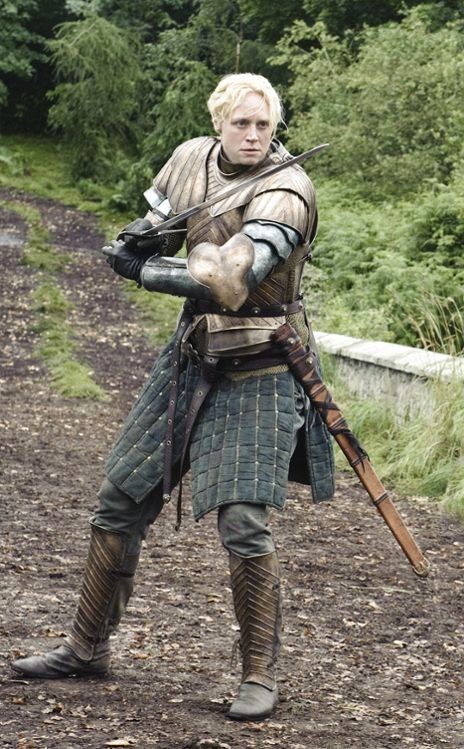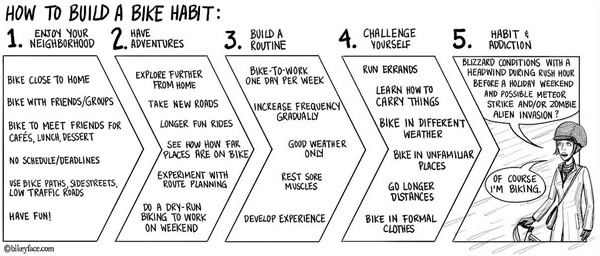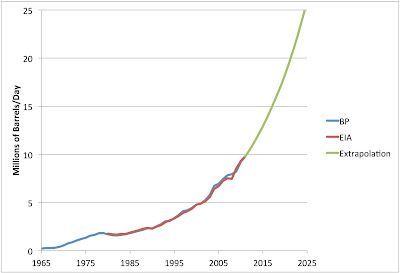Shared posts
20130519
PhilipbrewerI thought Jackie might appreciate this take on Puff.
Posture Guru of Silicon Valley
PhilipbrewerI'd shared a link to a TED talk by this woman earlier. Here's an article in the NYT.
This article by Amy Schoenfeld which appeared in The New York Times on Sunday, May 12, 2013, raises some very good issues about good postural structure. The article focuses on the work of Esther Gokhale who was trained as a biochemist at Princeton University, but was motivated to explore the subject of posture to help her cope with her own recurring back “problems.” There is much in her “primal posture” that corresponds very well with tai chi movement.
I took a pole dance class (and I liked it)
PhilipbrewerFitness and empowerment through pole dancing...
Are there many things more certain to ignite controversy among a certain class of feminists than the idea of pole dancing for fun and fitness? The controversy has ebbed somewhat in recent years, but it still pops up from time to time, usually in the form of lectures about young women searching for empowerment by posing as strippers and how they are Doing Feminism Wrong by spending their time “pole-dancing, walking around half-naked, posting drunk photos on Facebook, and blogging about your sex lives” instead of fighting for reproductive rights.
As a woman in her 30s who has been immersed in online feminist communities since I was a teenager, I’m pretty well-familiar with the arguments against pole dancing. I’ve read “Female Chauvinist Pigs” and I understood the point Ariel Levy was making. But I couldn’t really find myself getting too worked up over the fact that some women found it fun to put on clear heels and shake their butts while swinging on poles. Sure, it wasn’t something I was particularly clamoring to do, but I figured that was just because pole-dancing wasn’t in my personal wheelhouse, not because there was something fatally flawed about the entire enterprise. Live and let live, you know?
My opinion started to change a couple of years ago, when my best friend Brandi took up pole dancing. Actually, she didn’t just take up pole dancing – she got really into it. I mean, reaaaallly into it. This is how into it she got: she began teaching, she quit her job as a technical writer, she opened a dancewear-and-shoes boutique, and now she owns a pole studio in Tampa. Like I said, she is really, really into pole dancing.
Naturally, when one of the people I love and admire most in the world gets really, really into something, I am inclined to find out more about that thing (unless, of course, it involves thetans or crack cocaine or something similar). Brandi and I talked about her experiences with pole, what she loved most about it, how it changed her attitudes toward life and herself. We talked about the way so many people seemed to regard it in a variety of negative ways: silly, retrograde, damaging, embarrassing, shameful. She told me that she hated the way some people acted as though she did pole to please her husband, and not something she did for her own enjoyment.
Best of all, she shared videos with me of pole dancers doing the most incredible things, spinning and climbing and lifting themselves, and doing so in a way that was graceful and sexy and feline and powerful. I admired the aesthetic of the dancers and the way they, like so many acrobats and aerialists, were capable of exercising such exacting control over their bodies. Over time I became intrigued, and I decided that I would give it a try.
A couple of weeks ago, the pole-dance stars aligned. I am not in training for any specific race right now, and Brandi decided to offer a beginning pole-dance boot camp that lasted five weeks. I signed up. My first class with Brandi was last Friday.
I showed up at her studio, and since it was the first time I’d seen it, I spent the first few minutes squeeing with her over the studio as she showed me around. She introduced me to the other ladies taking the class, who were sitting on a couch strapping on their heels. I did not own a pair of stripper heels, so I planned to take part in the class while barefoot. I did, however, wear a pair of booty shorts, since Brandi had told me how the skin of my legs and inner thighs will provide me with extra grip when climbing on the pole.
We all took position standing next to a pole facing a wall of mirrors. We started off with some exercises to warm up our shoulders and arms, then Brandi walked us through the basic terminology and moves involved in pole. She showed us where to hold our arms and how to position our shoulders so they remained firmly in their sockets. She had us walk around the pole and explained that she would use phrases like “inside leg” and “outside arm” to instruct us. Then she had us do a couple of non-tricky moves, starting with the “body wave,” which involves rolling your body in an upward wave against the pole.
As I tried to do the body wave for the first time, I started feeling an uncomfortable sensation that I quickly recognized as embarrassment. “I feel like I should be alone with the pole for this,” I joked in a weak-ass attempt to mitigate my awkwardness. I tried it a few more times, and each time I was mortified by the way my body didn’t seem to roll as much as it stuttered, which I knew was happening only because I was feeling embarrassed and self-conscious. Brandi said it was okay, that everyone feels awkward at first, and to just keep practicing.
Next was the “moneymaker,” where we bent over at the waist and used a variety of techniques to – you got it – shake our moneymakers. The idea isn’t so much to move our actual butts as it is to make our butts jiggle. Again, I failed miserably at this. It was during my attempt to make my booty jiggle that some random creepy guy opened the front door, poked his head in and started laughing and leering at us. We all started screaming at him to get out, and I briefly considered walking over to him and physically shoving him out of the studio, but fortunately he left before that became necessary. Seriously, bro, NOT COOL. (And hello, we are in Tampa – it’s not like there aren’t places where the women are happy to do this for you just down the street. Of course, that’s provided you aren’t a cheap piece of shit and are willing to give them some money.)
After this, we moved onto spins, which are moves in which the dancer hooks one leg and her hands around the pole, then spins until she glides to the floor. At least, that’s what a spin is supposed to look like. I, on the other hand, looked about as graceful as a marionette held by a drunk puppeteer. I could not get my legs to behave. It was like my legs interpreted my attempts to glide gracefully to the floor as stumbling and falling, and bless their hearts, they were like, “girl, we’re here to save you!” and then shot out of nowhere, causing me to land awkwardly on my ankles. More than once, I banged the inside of my right knee so hard against the pole that I am still carrying around a blossom of greenish purple on my leg.
It was just a huge clusterfuck, made even more clusterfuck-y by the fact that every other woman in the class was executing the spins quite nicely. And Brandi – well, let’s just say that girl looked like she was born with her legs wrapped around a pole.
It was at this point that I noticed my bare feet were not doing me any favors when I tried to pivot, so I broke down and rented a pair of white vinyl six-inch heels from Brandi. I pulled them on, then stood up and surveyed the view from my new NBA-ready vantage point. I walked around for a bit, got myself comfortable with my altered center of balance, then went back to the spins. Finally, I almost successfully pulled off a herkie spin. Almost. Kind of. At least, that’s what I’m telling myself.
The last part of the class was an introduction to pole sits and climbs. The pole sit is a move in which you squeeze your thighs together so you end up sitting on the pole while in the air. We wiped down our poles with some rubbing alcohol, then Brandi walked us through each step leading up to the pole sit. I followed each step, then got myself into position, pressed my thighs together around the pole, and voila! I was pole-sitting! I couldn’t believe it. I had actually done something right. I came back down, then got back into the pole sit again, just to make sure it wasn’t a fluke, and it wasn’t. I could actually do it. I could even lift my legs straight in front of me.
The climb is similar in that you use your arms and legs to hold yourself in the air. Brandi showed us how to line our shin up with the pole, then flex our feet so the front strap of our shoes was gripping the pole. Then we put our hands on the pole over our head and pull ourselves up. By this time, my hands were sweaty and I kept slipping, so Brandi had me put some grip-aid on my hands. The grip-aid basically serves the same purpose as chalk for gymnasts and weight-lifters, and within a couple of minutes, my hands were dry and tacky. I got my leg into position, grabbed the pole, and pulled myself up.
And holy shit, I did it. I pulled myself right up onto that pole, and I stayed there. I stayed there long enough to see myself in the mirror, and I have to say, I looked amazing. My arms were flexed, my legs looked strong – I looked amazing. It was the closest my tall ass was ever going to get to being an acrobat.
I did it a couple more times, each time marveling at the sensation of having pulled my body up into the air like that. I would have kept doing it all night long had the class not come to an end.
I’ve been thinking a lot about the class since it ended. I’ve thought quite a bit about how much fun it is, and how I’m looking forward to my next lesson this week. I’ve thought about how I am decent at things that require brute strength (pole sits, climbs) and how I suck at things that require grace and elegance (everything else), and how the only way I will not suck at those things is to practice.
I’ve thought about how it’s possible to enjoy things you would have never thought you were capable of enjoying. I mean, I’m kind of a tomboyish jock who doesn’t really do femininity and sexiness all that well. I’m one of the last women you’d expect to see in a pole class. Yet I ventured outside of my comfort zone and found myself experiencing something quite remarkable.
And I do feel like there was part of the pole-dancing thing that was remarkable for me, and I don’t necessarily mean exploring the realm of public sexiness (with which I am admittedly very much uncomfortable). Rather, it was during the part of the class where we focused on climbs that I had an epiphany about myself. I knew I was doing something that required a considerable amount of physical strength, and that the fact that I was doing these things meant I was strong.
I am very used to thinking of myself as a work-in-progress – as someone who is trying to become strong – that I often lose sight of where I am right at this moment in time. I have a bad habit of comparing myself to other people and finding myself falling short. I don’t think about how fast I can be, just that I am not as fast as other runners. I don’t think about myself as strong, just that I can’t deadlift as much as some other lady lifters can. It’s hard for me to conceive of myself as myself, not in relation to other people.
But as I hung there on that pole, suspended in the air using nothing but my arms, legs and a strap of vinyl, I realized that there is no “becoming” strong – I already am strong. I can become stronger, but I’m already strong.
It was a tectonic shift in how I thought of myself, and it didn’t happen in the weight room with chalk flying through the air. It happened on a pole with Lucite heels strapped to my ankles and a pair of booty shorts. If you had asked me where I’d have that epiphany, hanging off a pole would have probably been damn near the bottom of the list of possible places for this to have occurred. And yet, that’s exactly where it happened.
P.S. About the shoes…they really are comfortable. I swear.
Hiroshi Yoshida Above the Clouds 1929
PhilipbrewerHiroshi Yoshida!

Hiroshi Yoshida
Above the Clouds
1929
[cancer] Field notes from Cancerland, blood and sunlight edition
PhilipbrewerShared for the picture and the link to Loki: http://www.lokiusa.com/
Blood Chemistry
My bloodwork from Monday’s oncology visit indicated elevated sodium and depressed magnesium. We’re not clear on why I would show elevated sodium, except as possibly an accident of diet over the preceding weekend. The magnesium depletion is a known side effect of Vectibix. Though I’m already taking a magnesium supplement, I now have to double that up. Since magnesium, like calcium, is contraindicated with my Doxycycline, I have upgraded to a four-times-per-day pill routine. Oi.
Liver Functions
The bloodwork also showed my liver functions as continuing within normal ranges. This means whatever’s going on with the elevated CEA levels hasn’t yet grown large (or fast) enough to impair my liver. That’s relatively good news, as the swiftness of the recent spike in CEA levels, combined with my recent metastatic history, had led me to fear a wildfire metastasis moving very quickly through my body.
CEA Levels
As of Monday, CEAs were at 6.6, up slightly from 6.4 two weeks ago. That amount of variation is within the margin of error of the testing process. Since one of my fears was a sharply uptrending CEA, in a weird way, this is good news. It’s also bad news as it confirms the overall uptick from March’s 2.9, which implies with near-certainty new metastatic tumor activity, probably in my liver. I will know more on 5/8, after my 5/7 CT scan. I have also queried my oncologist about the value of getting bloodwork done on 5/7 (ahead of my usual schedule) in order to have the most current information when we meet.
Social Work
After a conversation with the American Cancer Society reps in the infusion center Monday, I am pursuing an appointment with the oncology social worker to discuss support resources in the somewhat likely event I receive a difficult diagnosis on 5/8. We’ve been playing phone tag thus far. I’ve made it the past five years without feeling the need to seek a support group, but when I go terminal, I suspect I will benefit from something like that, as I’ll be further outstripping the resources of my circle of friends, family and loved ones. Likewise, looking to such support for ![]() the_child. She may or may not be interested in participating, but I definitely want to offer her the option.
the_child. She may or may not be interested in participating, but I definitely want to offer her the option.
Planning Ahead for Liver Failure
I am also pursuing an appointment with the oncology nutritionist to talk about how to eat in the context of progressive liver failure, as seems to be a likely future course. Even if this round turns out to be something other than liver metastases, liver mets are my most probable fate. As mentioned before, I am also meeting with my primary care physician on 5/10 to talk about the course of liver failure and what kinds of advance planning we may want to do with regard to treatment decisions, cognitive issues and so forth.
Dealing With Photosensitivity
A while back, Team E— turned me on to a line of clothing from Loki. They’re climbing wear, but they turn out to work really well for people with extreme photosensitivity. (i.e., me.) Basically, Loki makes jackets and hoodies at various weights which include hoods much deeper than normal, face masks and optional mittens built into the sleeves. It’s some pretty clever stuff.
The problem is that the first hoodie I bought was in black, and when I have it on in full sun aversion mode, I look like I’m about to rob a convenience store. So we got one in green. Which mostly makes me look silly. Which fine, because silly is less scary to other people.
Lisa Costello and I were trying to put a name to this outfit, but it was ![]() calendula_witch who said I looked like the Jolly Green Jawa.
calendula_witch who said I looked like the Jolly Green Jawa.
At any rate, Loki gear is highly recommended if you or someone you know is dealing with chemo-induced photosensitivity. (Or photosensitivity for any other reason, I suppose.)
Skin Conditions and The Itch
Another piece of advice on living with cancer that turns out to need a signal boost cropped up during last week’s Reddit Fantasy AMA chat, of all places. That has to do with dealing with skin conditions and the damned itching from (in my case) Vectibix. There are certainly other drugs which create this problem as well. Almost every night, I take a baking soda bath. Like you might do for poison ivy. I use the equivalent of a box of baking soda, though we buy it in large bags from Costco, poured into water as hot as I can stand to be in. I then soak myself in various positions to get as much coverage as possible. This also tends to make me very sleepy, which combined with the reduced itching, leads to a much better night’s rest. My skin winds up feeling a bit slippery from the baking soda, which takes a bit of getting used to, but I also take a shower every morning. So, as with the Loki gear, if you or someone you know is dealing with chronic skin conditions or itching, this is highly recommended.
Photo © 2013, Lisa Costello.
This work by Lisa Costello is licensed under a Creative Commons Attribution-Noncommercial-Share Alike 3.0 United States License.
How to Build a Bike Habit
PhilipbrewerOf course I'm biking!
Boston area-based Bekka Wright’s site, Bikeyface, features comics about urban cycling. Contrary to what Toronto’s stupid mayor will tell you, biking is actually a practical way to get around a big city that offers a number of advantages over the car and public transit (and yes, I also use them too).
Her How to Build a Bike Habit comic shown above offers ideas on how to make more and better use of your two-wheeler. I’m at phase 4: I often bike commute from home in High Park to client meetings or social events downtown, take the bike to do grocery shopping and even use it to explore less-familiar parts of the city.
Walking and Living in Wild Places
PhilipbrewerSteven on walking.
Visiting Walden Pond got me to read Walking by Henry David Thoreau. Walking is clearly a great thing -- Philip has been talking about long walks and Michael Moore has started a movement of getting people to walk with him. I've spent a lot of time walking (and standing) over the past few days, attending the various graduation ceremonies. And my feet hurt, which suggests I should be doing more walking. Hence my interest in reading Walking.
Or reread. I seem to remember that I read it once before, long ago. I read it much differently as an older man than I once did. It resonated with me much more in my youth.
Thoreau only lived to age 44. He published Walking in the year before he died, bedridden with tuberculosis. I can easily imagine him, traveling over in his mind's eye the places he could no longer visit in the flesh. And we never got the benefit of hearing what Thoreau might have said had he lived to 50 or 60… Or 90. I also read Civil Disobedience differently, listening to Thoreau sneer at the little people around him. Thoreau would have made a good libertarian, nose in the air, supremely confident that he knows better than the proles and plebes all around him.
Thoreau took great pleasure in the wild, unspoiled places of the Earth -- of course, no-one knew, at the time, that the unspoiled places he was writing about were simply a palimpsest overwritten by the disease and genocide that depopulated North America in the centuries that followed its "discovery" by European settlers.
This isn't to say that I don't love wild places too. And appreciate knowing the different plant communities in an oak or maple forest. And sensing the deep time in the rocks and soils upon which the verdant covering is but tissue thin.
But I can also appreciate the wildness of not mowing my lawn for a week. There's all kinds of stuff in there! Blue violets and white violets. Ox Eye Daisies and Buttercups. Sensitive Fern and Creeping Charlie. And the pernicious Garlic Mustard trying to sneak in.
I visited the home of a couple of colleagues that live off the beaten path in Wendell. I drove for more than half an hour up into the wild places and, eventually, turned off the road onto a narrow sandy lane, across a tiny creek, and up to their house -- a glorious contemporary sited above a large curve of an impoundment bordered by boulders and pine trees and wetlands. It was breath-taking.
I spent my later childhood years in a home not unlike that -- a colonial, rather than a contemporary, and in a wet forest behind a farm field, rather than above a spectacular vista. But the long drive and the long lane back into the woods brought it inevitably to mind. And, as I left after the sunset, the swarms of black flies (although for us it was mosquitoes and deer flies).
I chose to live in a small house near where I work and where my boys went to school. Where I can take the bus and ride my bike. And I am content. Such wildness as I need, I can find in abundance close to home. But I should get out and walk more.
Neoliberalism and the fall of education
Yesterday, I attended commencement and then a dinner for outstanding undergraduates. Each dean of each college and school called their candidates to stand and be recognized and each group would respond with a roar -- except for the School of Education. Only a few thin voices went up. For a moment, I was surprised and then I thought, "Duh. Who would want to go into education in the current climate?"
This morning, I see that similar things are happening in Britain. But this is the story of every teacher I've known over the past 10 years.
The neoliberals have waged a unparalleled war against the teaching profession for a generation. Rarely has an entire profession been so vilified. They have conducted a witch-hunt for "bad teachers" as being at the root of all of society's ills. They claim they want to improve education, but when you look at what they've done, it's clear that their agenda all along has been to destroy it.
In its place, they would create for-profit schools where students are imprisoned in a behaviorist wet-dream, supervised by robots while they fill out bubble sheets. The idea that education should be empowering -- or even involve contact with empowered, well-educated people -- seems absent from their plans.
In the past on these days in May, I would be attending the MTA Annual Meeting in Boston. But it's been depressing, year after year, to watch the gains for educators get clawed back by relentless attacks from the Right. Last year, it was Stand for Children assaulting teacher evaluations. Before that, it was a ballot initiative to eliminate the state income tax. This year, it's retirement health care: they're gutting the plan, making us work longer, pay more, and get less.
In a generation, people will look back and wonder why we did this. The worst part is knowing that it's not really mean spirited -- it's just business. Partly, it's that public education just doesn't matter for the wealthy -- even if they didn't actively believe that disempowering other people's children was a good thing. Mainly, it's just dollars-and-cents. They want to finish the job of destroying organized labor and they want to extract rents from yet another sector of the economy.
MTD 2013-2014 Service Year
PhilipbrewerDunno if this is worth going to, but there it is.
Mending the Moon, by Susan Palwick
PhilipbrewerMrissa on Susan Palwick's latest!
On the cover of this book,
Mending the Moon is about grief and healing. But one of the things it's exploring about grief and healing, which I haven't seen in fiction very much before, is how fandoms and consciously created mythologies interact with times of stress. The chapters about two grieving families trying to adjust to their new lives alternate with chapters of Comrade Cosmos stories and discussion of Comrade Cosmos fandom, and the two intertwine thematically but also at some spots practically. "What would CC do?" is, realistically, not a question that people sit down and answer earnestly--but it is a question that's in the backgrounds of their lives and assumptions, in the way they process the world around them. The people of both the fictional and the meta-fictional world grieve and cope plausibly, with prickliness and randomness and occasional breakdowns and self-destructive behaviors. But also plausibly, they manage to put things a little more together, to improve things just a touch if not always in the direction they'd planned or hoped.
Sometimes I will need a book like this. I'm glad to have it now, when I only want it.
Pop culture needs more Briennes of Tarth
PhilipbrewerShared mainly for the mention of Linda Hamilton in Terminator 2, but also because I agree that fit women are hot and that I'm getting a little tired of movies using special effects to make women who are "hollywood hot" look like they can beat up bad guys.
A few months ago, my husband was watching “Hunted” on Cinemax while I was puttering around on the series of tubes, and after one particularly action-packed sequence where the female lead dispatches a whole posse of would-be assassins, he says, “I don’t mean to be sexist, but I can’t believe that she can just beat up all of those huge men like that. Look at her! She’s so skinny!”
“But that’s not sexist,” I told him. “It’s actually true.”
After a few minutes, he switched over to the UConn/Notre Dame women’s basketball game and we watched that instead. At some point, UConn center Stefanie Dolson made a solid rebound, and I said, “Why don’t we ever see female action heroes that look like Stefanie Dolson? I’m way more likely to buy that she can beat up a bunch of guys than most of the actresses in these shows.”

My request was answered a few months later, after we joined the rest of the free world and started watching “Game of Thrones.” Partway through the second season, we are introduced to Brienne of Tarth, a highborn woman who ditches the trappings of Westerosi ladyhood in favor of swords and fighting and knighthood. Brienne is often the tallest person in any given scene, she wears her armor like a tank, and most importantly, when she fights off three attackers at once, you believe she could actually do it.
It should probably go without saying that I love Brienne of Tarth. Not only do I like that she kicks ass, but I like that she represents for all of us ladies who have heard over and over again that we are freaky and undesirable because we happen to be a lot taller than the average women (or average man, for that matter). I get her defensiveness and her awkwardness. I get it because I lived those things. (And I’ll admit, I totally ship her and Jaime. They are my OTP. And yes, I am aware that I am outing myself as a ginormous dork in this paragraph. But hey, at least I’m not the only one.)
But even putting aside my own personal feels on the matter – of which I admittedly have many that are quite strong – I have to say that I find Brienne of Tarth refreshing. She is the proverbial tall drink of cool water in a desert filled with size-0 actresses who prepare for their action roles with “rabbit food” diets (h/t Scarlett Johansson during a press junket for The Avengers), which I suppose is understandable considering that the actresses who don’t go the rabbit-food route are showered with criticism for looking “too fat” (as with Jennifer Lawrence in The Hunger Games).
Hollywood’s insistence on giving us female action stars that still look rather underfed is a blatant example of pop culture-makers wanting to have their cake and eat it too. They want to be praised for having “strong female characters,” but they don’t want to deviate too far from the ever-narrowing standards of fuckability. They want to make a grab for female fans but they don’t want to challenge the status quo too much. They want to appear modern while still clinging fiercely to outdated beauty standards.
The end result? Movies and TV shows in which we are asked to unquestioningly accept the premise that a woman with arms courtesy of the Tracy Anderson Method (TM) can throw a punch that would knock out a dude who looks like he body-slams elephants in his free time.
You know, I get that there is a certain suspension of disbelief required when you get involved with pop culture. I am not asking for perfect realism here, but some nod to the realities of human anatomy would be nice, and the reality is that anyone – no matter what their gender – who wants to be able to kick some ass is going to need some muscle with which to propel the instruments of ass-kicking. Male actors regularly spend time in the gym to put on muscle for these kinds of roles, because the role demands it. Actresses undergo training, too, but the most important goal remains making sure they still look good in their mandatory latex catsuit.
It’s not as if the female action hero who actually looks like she can kick ass is foreign to Hollywood. I mean, I can’t possibly be the only person who remembers Linda Hamilton in Terminator 2:

And more recently, MMA fighter Gina Carano in Haywire:

And what about Michelle Rodriguez in, well, everything:

Don’t get me wrong: all of these ladies are still operating very much within the constraints of Hollywood feminine beauty. All of them are slender and beautiful and still recognizably feminine. It only required just the tiniest widening of acceptable appearances – in these cases, by allowing the women to have some arm muscles – for them to become believable as ass-kickers.
Even Gwendolyn Christie, the actress who plays Brienne of Tarth – a character who is mostly derided within the Game of Thrones world as being beastly and horribly unattractive – is really quite beautiful:

As I thought about this and wrote it, I realized that I was inadvertently making the argument that I don’t think thin women can be strong or can fight, which is not my intent. Nor do I think that an actress is necessarily going to be unbelievable as a fighter just because she is thin. For instance, Michelle Yeoh may not have martial arts training but she has the skills to make her stunts look realistic, and I really liked Scarlett Johanssen as the Black Widow in The Avengers. I’m sure we could all think of individual instances in which thin actresses made believable action stars.
But the problem isn’t with the individual actresses and the individual roles. Rather, when you step back and take a look at the big picture of female representation among the fighters and action heroines of pop culture, what jumps out is the lack of diversity. It’s not that some thin, small women are capable of being believable as action heroines. It’s that we only see thin, small women as action heroines. (And let’s be real: we mostly only see thin, small women as ANYTHING in movies and television. This is a problem that is not limited to entertainment that includes violence and action. It is fucking endemic in our culture.)
This kind of lack of diversity of on-screen representation is one of the things feminist media critics address when they talk about the demographics of those responsible for making pop culture. Five percent of directors are women and most of those directors are white. Women of color are even more underrepresented. Women are also underrepresented in screenwriting, producing, cinematography, editing, you name it.
But it’s more than just the fact that white men overwhelmingly dominate the creation of pop culture in our society. After all, George R. R. Martin, who wrote the Song of Fire and Ice series, is a man, and a white one, too. Most of the directors and the show writers are white guys, too. I think it’s simplistic to say that white men are not incapable of creating art and pop culture in which women are given space to exist in a variety of ways, because they certainly do.
It’s more that a sensibility promoted by a certain kind of white guy is what dominates the way things are made. (You could call it the “Michael Bay effect,” I suppose.) It’s the expectation that the only kind of woman who should be seen on-screen should be a fuckable woman, and that what is defined as “fuckable” is a very specific kind of female body and appearance, which in turn is transmitted around the world as the standard of female beauty to which we all should adhere (whether through emulation or through desire).
And if you want to get sociological about it, we can talk about how the seeming contradiction posed by these waif-like ladies who kick ass reflects other trends in our society at large, particularly the way many women and girls feel huge pressures to be perfect at school, their careers and their families, all while maintaining a flawless appearance and making the whole thing seem effortless. “Yep, you can have it all, but you better make sure you look hot while doing it,” the overwhelming message seems to be. (In fact, a whole documentary just came out about this very thing.)
So when I think about the rise of Brienne of Tarth against this messy cultural background, the fact that she even exists feels fantastic. That she’s a total badass makes it even better. I just wish we had more of her.
"I’m getting tired of making insects that just hatch, eat,...
PhilipbrewerA day or two ago, someone (I don't remember who) referred to "The Year of 17 Cicadas," which seemed to me like a great title for a slow, pensive literary novel.

"I’m getting tired of making insects that just hatch, eat, mate, and die."
"Well, what else are they supposed to do? Seems like you’ve hit all the major requirements there, evolution."
"I don’t know, something more interesting."
"Like what?"
"Like maybe hatch underground, putter around down there for 17 years, emerge in massive swarms that tear through the countryside and dive-bomb weddings and generally freak everyone the hell out for a while, and then eat, mate, and die.”
"Hm. ‘Interesting’ is one word for that."
"I can see it now. The 17-year cicadas: Just when you thought you could forget.”
"That’s ridiculous. You watch too many movies."
“BZZZ, motherf—ers! BZZZZZZZZZZZZZZ.”
Fox sends fraudulent takedown notices for my novel Homeland
My Creative Commons licensed, 2013 novel Homeland, the sequel to my 2008 novel Little Brother, spent four weeks on the New York Times bestseller list, and got great reviews around the country. But Fox apparently hasn't heard of it -- or doesn't care. They've been sending takedown notices to Google (and possibly other sites), demanding that links to legally shared copies of the book be removed.
These notices, sent under the Digital Millennium Copyright Act, require that the person who signs them swears, on pain of perjury, that they have a good faith basis to assert that they represent the rightsholder to the work in question. So Fox has been swearing solemn, legally binding oaths to the effect that it is the rightsholder to a file called, for example, "Cory Doctorow Homeland novel."
It's clear that Fox is mistaking these files for episodes of the TV show "Homeland." What's not clear is why or how anyone sending a censorship request could be so sloppy, careless and indifferent to the rights of others that they could get it so utterly wrong. I have made inquiries about the possible legal avenues for addressing this with Fox, but I'm not optimistic. The DMCA makes it easy to carelessly censor the Internet, and makes it hard to get redress for this kind of perjurious, depraved indifference.
Albrecht Durer A Young Hare 1502
PhilipbrewerI was just pointing out to the Wise Bread folks that it would be tough to do better than to get Albrect Durer to illustrate our blog posts. But they pay no attention to me any more.

Albrecht Durer
A Young Hare
1502
Hiroshi Yoshida Komagatake 1929
PhilipbrewerHiroshi Yoshida!

Hiroshi Yoshida
Komagatake
1929
Actress from All Her Children Fought has a few Irish Folk songs for preview
PhilipbrewerMostly a placeholder to remind me to check out her music.

Kate Gisbourne, the actress from the short film adaptation of All Her Children Fought, is also a folk singer in Ireland in a duo called Woodlark.
Her first album comes out soon. She’s set up a Facebook page here. She emailed me to say that three of her songs are up on SoundCloud for people to listen to if they are interested in Irish folk/country/blues, as well as a recent radio interview she did.

AirAware
PhilipbrewerI can think of people who'd pay for one of those—to annoy other people.

We Want to Hear From You!
PhilipbrewerI responded. I'd encourage other local folks to do so as well.
Extrapolating China's Oil Consumption
Here is a graph of China's oil consumption according to two data sources. The annual data run 1965-2011 (2012 is not available yet):
This has obviously grown hugely. If we look at the average growth rates over the prior decade at each year, that looks as follows (blue curve, left scale):
Growth has been stable in a band between 6% and 8% for several decades, with 7.2% being the figure for the latest decade available. The red curve on the right scale shows real oil prices over the same time period, demonstrating that Chinese oil consumption growth going back into the eighties is not at all price sensitive.
If we note that Chinese population is four times larger than the US population, and 2011 US consumption was almost 19mbd, we see that Chinese per-capita consumption is still only something like 1/8 of that of the US. So there's a lot of room to grow still. Also, China is in the middle of building an expressway system that will be substantially larger than the US freeway system.
If, then, Chinese consumption were to continue to grow around 7% out through 2025, it would look like this:
That's another 15mbd in the next thirteen years or so. Just for China. If you compare this to things like the extra 4mbd you might hope for from tar sands in this time frame, or the 2mbd that global crude supply has increased since 2005, you can see that this is going to stress the global oil system a lot. Either the global crude supply is going to grow a lot faster than it has been, or OECD oil consumers are going to have to consume a great deal less than they are now, or China (and other rapidly growing consumers) are going to have to slow down a lot.
Whichever is the case, it's hard to see how any combination of the above happens on the necessary scale without prices a lot higher than the $100-$120 we've been paying in the last few years. The comparative truce in the oil markets during 2009-2013 seems like it cannot last forever.
Data-nerdish aside:
I noted a few months back that the EIA's data showed Chinese consumption falling 4% in 2011. That didn't seem very plausible and I speculated they had some data problem. That now seems to be confirmed as they've extensively revised their numbers and the 2011 fall has gone away. Here's what they show now:
Here's what it was before:
Trailer parks and boomers
PhilipbrewerPerhaps share the linked article with Barbara (as something interesting, not a recommendation).
Interesting:
“Baby boomers aren’t going to retire the way their parents did. They are poorer and more likely to live alone. They can’t depend on pensions, and the real-estate bubble destroyed almost 50 percent of their wealth. Today one in six seniors lives in poverty, and that proportion is rising; the generation of Americans now facing retirement is so financially ill prepared that half of them have less than $10,000 in the bank. The coming swell of retirees will strain our current system to its limits—in terms of not only health care, but also incidental things like road signs, which are hard for drivers over 65 to read in a majority of American cities and towns.”
Hiroshi Yoshida Yatsugatake 1926
PhilipbrewerHiroshi Yoshida! Perhaps not his best work.

Hiroshi Yoshida
Yatsugatake
1926
Congress and ACA exchange provisions?
PhilipbrewerSomething I need to write about.
Fuuuckkk. This is not a good sign:
“Congressional leaders in both parties are engaged in high-level, confidential talks about exempting lawmakers and Capitol Hill aides from the insurance exchanges they are mandated to join as part of President Barack Obama’s health care overhaul, sources in both parties said…”
(Via Will Congress exempt itself from ACA exchange provisions?.)
If Congressional aides don’t want to have to use the exchanges, it’ll mean they have no incentive to make sure they’re good for the rest of us proles.
ACA is the only way I’d be able to get health insurance in this country as a freelancer if I was the sole earner. If these jackholes fuck up exchanges, my choices are to move to New York to access freelance healthcare, Vermont, or Connecticut.
Or move to the EU (I have a passport) or Canada.
My heart defect knocked 3 years out of my writing career, but I’m coming back (seen some announcements around here showing what I’ve been up to) of late. And I’m just getting back to the place I was in 2008.
At some point this is going to have a big impact on the how and where trajectory part of my life.
I’m keeping a close eye on this.
Web of Life Hat
PhilipbrewerJackie is blogging again!
 In the many months since I last posted I have been having plenty of fun with textiles, including lots of small knitting projects with my yarn that I’ve spun over the years. My latest project I call the Web of Life Hat because it owes its origins to so many people.
In the many months since I last posted I have been having plenty of fun with textiles, including lots of small knitting projects with my yarn that I’ve spun over the years. My latest project I call the Web of Life Hat because it owes its origins to so many people.
The design started with the yarn shown next to the hat in the photo – an exuberant bulky skein my friend Beth Engelbrecht-Wiggans made plying yarn she spun with yarn spun by her mother in law. Beth’s yarn is dyed with indigo and goldenrod, so I combined it with selections from my handspun that I had dyed with natural dyes, including indigo, weld, and carrot tops.
The pale blue fuzzy yarn embodies another chain of family and friendship. It is the fur of a Great Pyrenees dog owned by someone I’ve never met. Our link is through my mother in law’s college roommate, and now through the yarn and hat.
Once I started thinking of the chain of relationships that went into the hat I had to add all people who taught me about knitting, spinning, and dying, and our ancestors who domesticated dogs and sheep and invented ways of making their fur into yarn, adding color, and making clothing.
Zeroing in on Amtrak
PhilipbrewerInteresting Amtrak bit. I was going blog about it, but didn't want to log into my blog via an insecure access point. Point I was going to make had to do with the network effects of connecting far-away nodes. Even if you don't (often) want to make that trip, the fact that it is possible makes all the other legs more useful than they otherwise would have been.
I point out something similar when I created a spreadsheet of profitable Amtrak routes and thought about how to make it profitable (quit running long ass lines through red-state areas of low density, basically):
“Some basic geometric facts: Intercity rail in the UK works because of the 63 million people in the country, 53 million of them live in England, an area about 16% smaller than the US state of Georgia, or 30% smaller than Washington, which has less than 7 million; most of the rest live in a small belt of Scotland or a pocket of Wales. There are therefore nearly an order of magnitude more people within a distance of each other that can be traveled by rail in a time competitive with flying.
Only two places in the US offer this kind of aggregate mega-regional density, which is essential to sustain a network of intercity trains at a reasonable level of public subsidy: the North East Corridor, possibly extended west out to Chicago; and the coast of California from San Francisco to San Diego. In other places, individual city pairs could make sense (e.g. Portland – Seattle), but those will always be A-B(-C) lines, not part of the network where you can travel widely.”
(Via Talking Sense About Amtrak – Seattle Transit Blog.)
Also quoted in the above article:
My understanding is that the real reason to run the long-haul trains at taxpayer expense is to touch enough states that most of Congress can feel good about Amtrak in general. The other arguments presented here sound largely rhetorical. Ridership may be rising but it’s a long way from profitable or even a reasonably level of subsidy per passenger. “National rail network” sounds like rhetoric without content. Rail is optimal for particular distances. Europe has lots of great rail services, but still, if you’re going 2000 miles within Europe, and you’re not a tourist or time-rich wanderer, you’re definitely going to fly.
My parents just rode the train from Virginia to Ohio last weekend to visit my twins for their 4th birthday and raved about how vastly superior it was to the hassle of flying.
Basically, you take a density map like this:

Anything with mountains on this image within 500 miles or so should have a high speed rail connection.
The vast empty bits?
No.
Question for Your Saturday
PhilipbrewerShared because I'd just shared the previous Scalzi thing, and becuase JoCo.
How I Keep Myself Amused on Long Flights
PhilipbrewerFortunately, trains do not have wings.
Flight update: Gremlin on the wing. Not unusual. Gremlin on the wing holding a placard. Slightly more unusual.
— John Scalzi (@scalzi) April 19, 2013
Reading the placard now. One side says: “ON STRIKE GREMLINS LOCAL 323″ Other side: “NO DESTROYED PLANES UNTIL PAY RAISE.”
— John Scalzi (@scalzi) April 19, 2013
I did not know being a gremlin was a union gig. Is there an apprenticeship? Are there good job bennies? Affiliated with Teamsters?
— John Scalzi (@scalzi) April 19, 2013
The gremlin is now sitting on the wing, legs dangling, placard askew, eating lunch and ignoring airline rep yelling at him.
— John Scalzi (@scalzi) April 19, 2013
This suggests that the airlines hire the gremlins. Well, I suppose that makes some sort of twisted sense. Wait, it doesn’t. Confused now.
— John Scalzi (@scalzi) April 19, 2013
Airline rep is now trying to bring in a scab worker. Looks like a boggart or maybe a troll of some kind. Wait — troll. Definitely troll.
— John Scalzi (@scalzi) April 19, 2013
I’m not gonna lie. This boggart/troll/whatever is doing a really terrible job of trying to destroy the wing. It really IS a skill.
— John Scalzi (@scalzi) April 19, 2013
Airline rep now yelling at troll. Troll has picked him up and tossed him into the jet engine. FINALLY some actual damage to the wing!
— John Scalzi (@scalzi) April 19, 2013
Now the troll and gremlin are talking. Gremlin hands the troll a flyer about the strike. Troll eats it. Gremlin explains it is not food.
— John Scalzi (@scalzi) April 19, 2013
Gremlin and troll have pulled out guitars and are now singing Woodie Guthrie songs. Want to know where exactly the guitars were pulled from.
— John Scalzi (@scalzi) April 19, 2013
Gremlin and troll gone, placard left behind. Concerned that getting on the plane meant I crossed a picket line. Must consult gremlin local.
— John Scalzi (@scalzi) April 19, 2013
I feel like we’ve all learned something today about gremlins, trolls and organized labor. Let me explain it in a song (pulls out guitar)
— John Scalzi (@scalzi) April 19, 2013
(pauses to consider that he doesn’t know where he pulled the guitar from, frowns, rings for the attendant to ask around for a doctor)
— John Scalzi (@scalzi) April 19, 2013
Captain has just come on the intercom, saying that the cabin has been underpressurized for the last half hour. This… explains much.
— John Scalzi (@scalzi) April 19, 2013
I can’t handle any of this any more. If any of you need me, I’ll be out on the wing.(opens emergency exit, leaves)
— John Scalzi (@scalzi) April 19, 2013
And Now, A Small Example of What a Generation Gap Looks Like
PhilipbrewerYep.
It looks like this:
Me (carrying the downstairs phone into Athena’s room): I need someplace to put this while the new kitchen counters are installed. Do you have a phone jack in your room?
Athena: A what?
Me: A phone jack.
Athena: I… I don’t know what that is.
(Both of us stare blankly at the other for several seconds in mutual but separate disbelief)
And now you know.
Chart of the day, reverse-causality edition
PhilipbrewerCharts worth contemplating.
This chart comes from Arindrajit Dube, who has a fantastic post chez Rortybomb on whether high debt causes lower growth or whether it’s the other way around. What you’re looking at is the famous Reinhart-Rogoff dataset, as made available by their critics (and Dube’s colleagues), Herndon, Ash and Pollin. Reinhart and Rogoff are the poster children for the statement that high debt loads cause lower growth, especially once those debt loads exceed 90%. But do they?
There does seem to be an inverse correlation between debt and growth, but Dube shows that the correlation is strongest at low levels of debt, below 30% of GDP, rather than at high levels of debt. Countries with debt of 30% of GDP have a significantly lower growth rate, on average, than countries with debt of 10% of GDP, while the numbers at debt ratios above 90% have much wider error bars and are much less useful.
But let’s grand the correlation, for the sake of argument: the next question is whether the correlation implies causation, and if so, which way the causation flows. Here’s Dube:
Here is a simple question: does a high debt-to-GDP ratio better predict future growth rates, or past ones? If the former is true, it would be consistent with the argument that higher debt levels cause growth to fall. On the other hand, if higher debt “predicts” past growth, that is a signature of reverse causality.
That’s what you’re seeing in the charts. Both of them have the same axes: GDP growth on the y-axis, and debt/GDP on the x-axis. Both of them plot the correlations in the dataset, with the dark line being the signal and the dotted lines showing the 95% confidence interval. And just as in the main dataset, the correlations are much clearer at low levels of debt/GDP than they are at higher levels.
But the two charts are different, all the same, especially at levels of debt/GDP above that 90% level. If you look at the left-hand chart, it shows that it really doesn’t matter how much debt you have: you’re likely to average about 3% GDP growth a year over the next three years. On the other hand, if you look at the right-hand chart, it shows that the more debt you have, you’re significantly more likely to have experienced low growth in the past three years.
In other words, the causation here seems about as clear as causal analysis can ever be: low growth causes high debt, rather than high debt causing low growth. Indeed, once you get past 90% of GDP, your debt load doesn’t seem to have any significant effect on future growth at all!
Identifying People from Mobile Phone Location Data
PhilipbrewerI can see how this is quite likely, especially for people who work a regular job, but also for people like me.
Turns out that it's pretty easy:
Researchers at the Massachusetts Institute of Technology (MIT) and the Catholic University of Louvain studied 15 months' worth of anonymised mobile phone records for 1.5 million individuals.They found from the "mobility traces" - the evident paths of each mobile phone - that only four locations and times were enough to identify a particular user.
"In the 1930s, it was shown that you need 12 points to uniquely identify and characterise a fingerprint," said the study's lead author Yves-Alexandre de Montjoye of MIT.
"What we did here is the exact same thing but with mobility traces. The way we move and the behaviour is so unique that four points are enough to identify 95% of people," he told BBC News.
Here's the study.
EFF maintains a good page on the issues surrounding location privacy.











